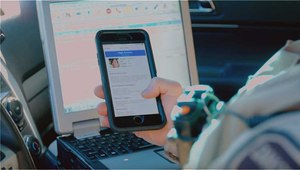Effective Communication with Persons with Disabilities - Strategies for Public Information Officers Across Multiple Platforms
As public information officers (PIOs), it is crucial to ensure that our communication efforts are inclusive and accessible to all community members, including persons with disabilities. By adopting strategies considering diverse disabilities and utilizing multiple platforms, PIOs can effectively communicate with persons with disabilities, promoting inclusivity and equal access to information. This article will explore key strategies for PIOs to communicate effectively with persons with disabilities across various platforms.
Understand Different Disabilities and Communication Needs
To effectively communicate with persons with disabilities, it is essential to have a comprehensive understanding of various disabilities and their specific communication needs. Familiarize yourself with disabilities such as visual impairments, hearing impairments, mobility limitations, cognitive disabilities, and neurodivergent conditions. This knowledge will help you tailor your communication strategies accordingly.
Ensure Website and Digital Accessibility
Digital platforms, such as websites and social media, prioritize accessibility to ensure that persons with disabilities can access information effortlessly. Follow established accessibility guidelines, such as the Web Content Accessibility Guidelines (WCAG), to make your online content perceivable, operable, understandable,and robust for individuals with disabilities. For screen reader compatibility, provide alternative text for images, video captions, and adequately structured documents.
Utilize Accessible Formats
Offer information in accessible formats that cater to different disabilities. Provide written information in plain language, using clear and concise language without jargon. For individuals with visual impairments, offer information in Braille, large print, or electronic text formats. Consider providing sign language interpretation or captions for video content to accommodate those with hearing impairments.
Caption and Transcribe Audiovisual Content
Ensure that any audio or video content you share is accessible to individuals with hearing impairments. Caption videos accurately and provide transcripts for audio content. Captions and Transcripts allow persons with hearing disabilities to understand and engage with the information effectively.
Provide Assistive Technology Support
Acknowledge the importance of assistive technology in facilitating communication for persons with disabilities. Familiarize yourself with standard assistive technologies like screen readers, screen magnifiers, alternative input devices, and voice recognition software. Ensure that your digital platforms are compatible with these assistive technologies, allowing individuals to access information seamlessly.
Use Clear and Concise Language
When communicating with persons with cognitive disabilities, use clear and concise language. Break down complex information into simpler, easy-to-understand terms. Organize information in a logical manner, using headings, bullet points, and lists to enhance readability and comprehension.
Engage in Active Listening and Patience
When communicating with persons with disabilities, listen actively and demonstrate patience. Allow individuals the time they need to process information and express their thoughts. Be open to different communication styles and adapt your approach to ensure practical understanding and engagement.
Seek Feedback and Input
Invite feedback and input from persons with disabilities regarding your communication efforts. Actively involve them in the planning and evaluation of your communication strategies. This feedback can provide valuable insights into areas that require improvement or adjustment to meet the needs of the disability community better.
Collaborate with Disability Advocacy Organizations
Forge partnerships and collaborate with disability advocacy organizations and community groups. These organizations can offer guidance, expertise, and insights into effective communication strategies. Engage them in developing and disseminating information to ensure inclusivity and accessibility.
To conclude
Effective communication with persons with disabilities is essential for PIOs to promote inclusivity, accessibility, and equal participation in public information efforts. By understanding different disabilities, ensuring digital accessibility, utilizing accessible formats, providing assistive technology support, and employing clear language, PIOs can bridge the communication gap and effectively engage with persons with disabilities across multiple platforms. Remember, effective communication with persons with disabilities is an ongoing process that requires continuous learning, adaptation, and collaboration. By implementing these strategies and seeking feedback from the disability community, PIOs can foster an inclusivity environment where every member of the community has equal access to information and the opportunity to participate fully.
Moreover, PIOS need to remember that effective communication with persons with disabilities goes beyond mere compliance with accessibility guidelines. It is about understanding the unique needs and perspectives of individuals with disabilities and valuing their contributions to the community. By actively involving persons with disabilities in decision-making and communication initiatives, PIOs can ensure they effectively address concerns and acknowledge their experiences through these efforts.
As PIOs, we are responsible for serving the entire community, including persons with disabilities. By implementing these strategies and promoting accessibility, we can break down barriers, foster understanding, and create an inclusive society where everyone can access and engage with public information regardless of their abilities. Let us embrace this opportunity to communicate effectively with persons with disabilities on multiple platforms, positively impacting their lives and strengthening the bonds within our communities.

Comments
Post a Comment